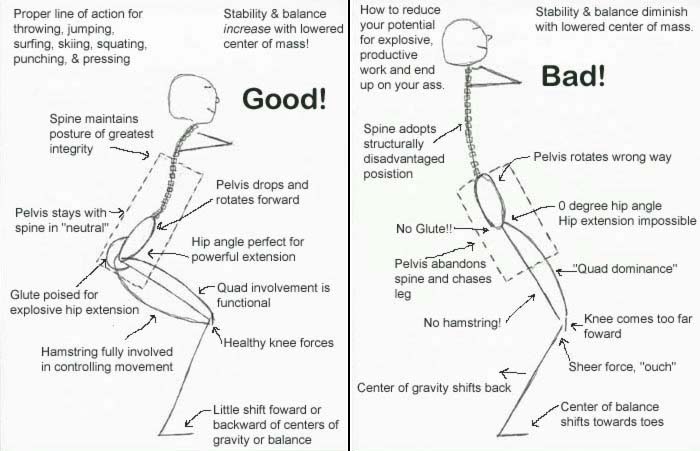
Hip fault is a common issue. We will tell you how to fix it.
Why we need to strengthen our posterior chain to avoid hip fault issue.
When we start members(either personal training or General population) working the olympic movements we typically mention a few different cues. All with the purpose of trying to eliminate the dreaded hip fault. See image above.
A lot of people are working jobs that are performed in a seated position; whether this is at a desk or work station.
The seated position tends to lead to tightness in the hip flexors. We have noticed more Psoas issues which in turn show up during the olympic lifts. Such as, when members are catching a power clean, push jerk and sometimes the power snatch. When receiving the barbell – they default into the hip fault position.
The seated nature of a lot of jobs there also tends to be an under -development of hamstrings, glutes and low back.
The underdevelopment of these muscles show up a lot. Typically, people are working on catching in a “good” position previously mentioned. Under development can be found when drilling “jump and land” positions. Also when completing box jumps or for those more advanced depth jumps.(Even in “advanced” athletes we have seen hip fault issues related to an underdevelopment of the posterior chain detailed below)
Things we work on to alleviate this problem:
First, focus on glutes, hamstring and low back development in almost all lower body focused sessions. As well as training sessions where power cleans, push jerks and power snatches are being utilized. After a proper warm up that includes banded exercises for the lower body we see a lot less hip faults in general.
For those performing self care after training sessions we utilize a Psoas Rite. The Psoas Rite has proven to be quite useful in reducing back pain or discomfort. We also have people work on “finishing” their lower body days with glute bridges for high repetitions. Or other hamstring, glutes and or low back exercises to continue to combat the effects of sitting for the majority of the day.
The risk associated with continuing to catch with a hip fault include, low back injury, knee injury, and quad injuries. We want to avoid these injuries at all costs. These injuries are all preventable – we just need to remove ego and build from the foundation first.
Ways to avoid the previously mentioned injuries:
When we start a new athlete we can substitute the barbell for other implements which gives the athlete greater control of how they land. One example is the dumbbell. We see significantly less hip faults when utilizing a DB as when starting someone out with a barbell. We wrote about utilizing the barbell in a previous blog.
Work on building strength up in in your posterior chain and avoid landing in the hip fault position to avoid injury and increase your success with training.
Interested in getting started with training? Need to gain strength and get healthy? Book a Free Consult today!
Thank you for checking out OG, OC is Bend Oregon’s premier CrossFit, Personal Training and Sports Performance gym in Bend.

